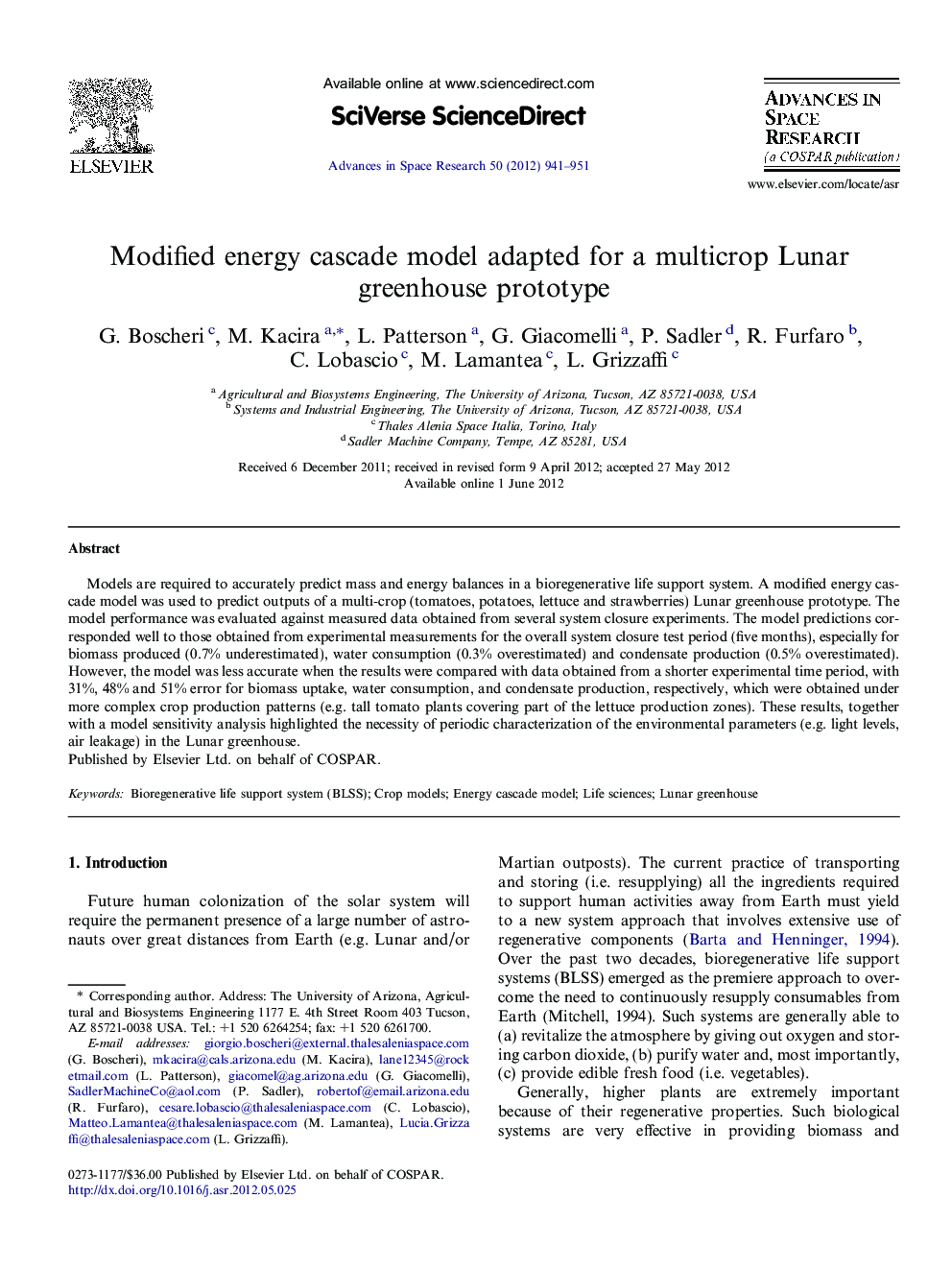| Article ID | Journal | Published Year | Pages | File Type |
|---|---|---|---|---|
| 1765318 | Advances in Space Research | 2012 | 11 Pages |
Models are required to accurately predict mass and energy balances in a bioregenerative life support system. A modified energy cascade model was used to predict outputs of a multi-crop (tomatoes, potatoes, lettuce and strawberries) Lunar greenhouse prototype. The model performance was evaluated against measured data obtained from several system closure experiments. The model predictions corresponded well to those obtained from experimental measurements for the overall system closure test period (five months), especially for biomass produced (0.7% underestimated), water consumption (0.3% overestimated) and condensate production (0.5% overestimated). However, the model was less accurate when the results were compared with data obtained from a shorter experimental time period, with 31%, 48% and 51% error for biomass uptake, water consumption, and condensate production, respectively, which were obtained under more complex crop production patterns (e.g. tall tomato plants covering part of the lettuce production zones). These results, together with a model sensitivity analysis highlighted the necessity of periodic characterization of the environmental parameters (e.g. light levels, air leakage) in the Lunar greenhouse.
